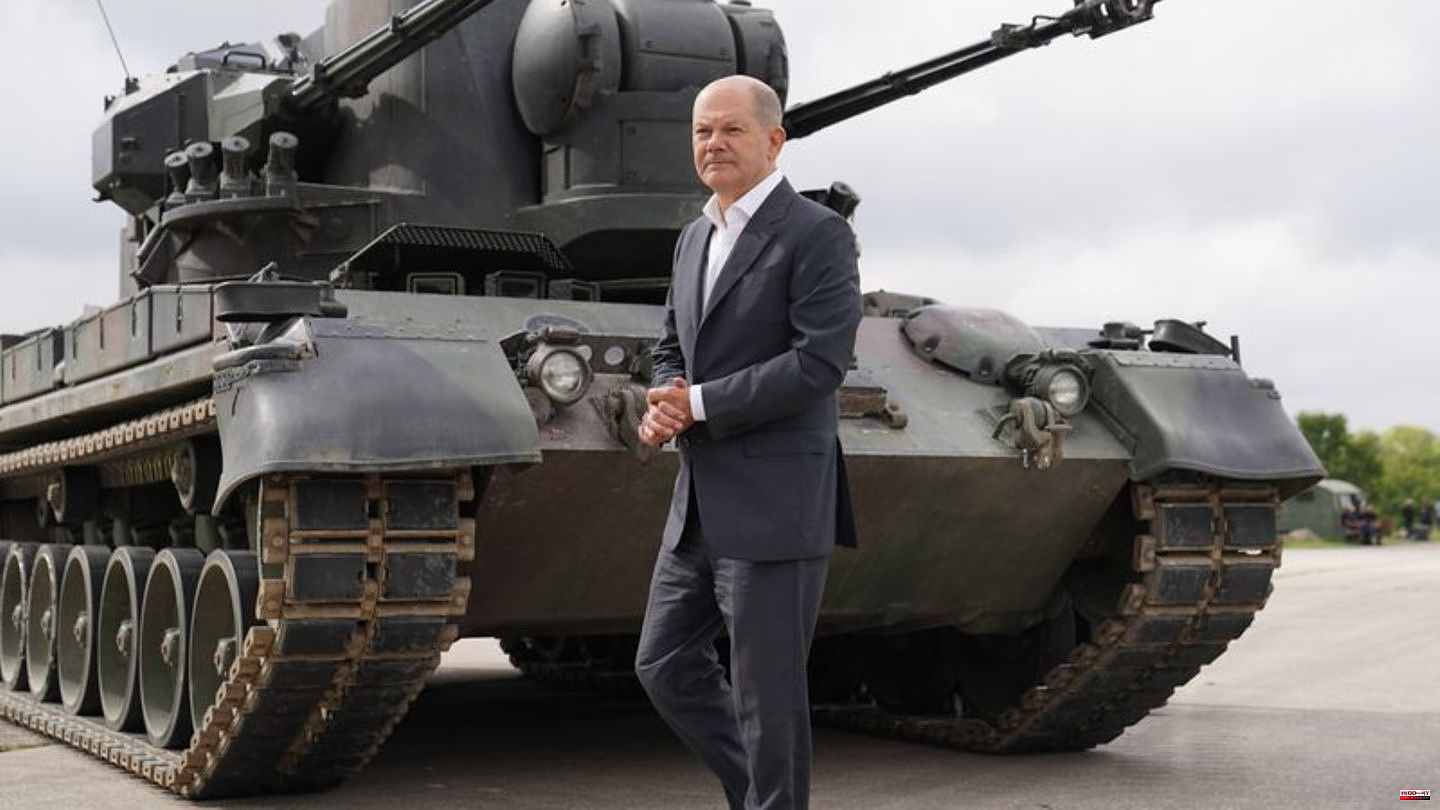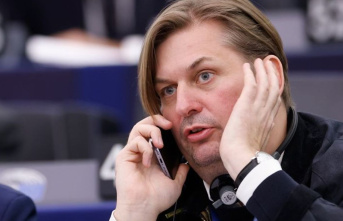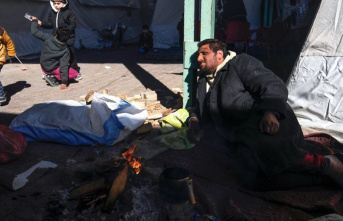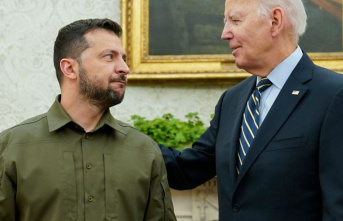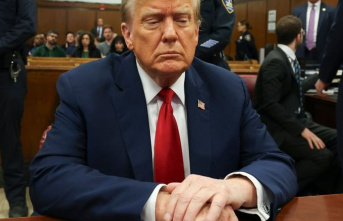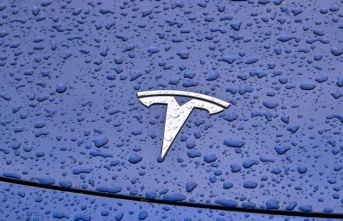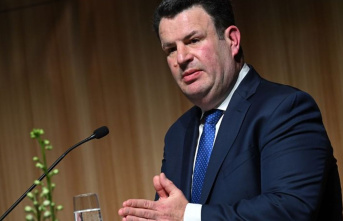A good year after his so-called turning point speech, Chancellor Olaf Scholz (SPD) will take stock of the consequences of the Russian attack on Ukraine tomorrow in the Bundestag.
It will be about what he has done with the announced special fund of 100 billion euros for the Bundeswehr and how he intends to further modernize the armed forces. But it should also be discussed what caused the taboo breach in February 2022 to send German weapons to a war zone for the first time to defend against a nuclear power. Where does Germany stand today in providing military support to Ukraine: at the forefront of the movement or just in the convoy?
What has Germany delivered in the meantime?
It all started with the safety helmets. At the end of January 2022 - one month before the start of the war - the then Defense Minister Christine Lambrecht (SPD) promised Ukraine 5,000 such helmets and spoke of a "very clear signal" to the country threatened by Russia: "We stand by your side." The Ukrainian ambassador Andriy Melnyk was already calling for air defense systems and warships when tens of thousands of Russian soldiers were forming up for the attack on the Ukrainian border. However, the federal government only promised the first weapons two days after the invasion. First it was bazookas and Stinger missiles. Then the quality was increased step by step up to armored personnel carriers and battle tanks.
What is the value of the guns?
According to its own statistics, the federal government approved the delivery of weapons and military equipment worth 2.556 billion euros by February 20. The Ministry of Defense uses a fair value for taxes from Bundeswehr stocks that takes depreciation into account. In the case of sales of the industry, the contract amounts are taken. Training costs are also included in the overall calculation. A large part of the weapons has already been delivered. Defense Minister Boris Pistorius (SPD) promised at a conference of Ukraine allies at the Ramstein US airbase in Rhineland-Palatinate in January that he wanted to increase this value to 3.3 billion euros in the spring. This does not include the 18 Leopard 2 main battle tanks that were promised later.
How is Germany doing in an international comparison?
The monetary value of military aid is calculated differently by individual states, and the system - whether current value or new value - is usually not fully disclosed. However, the United States is indisputably by far the largest arms supplier to Ukraine. They have provided more than $32 billion in military aid since the start of Russia's war of aggression, according to the US Department of Defense. That is more than ten times as much as in Germany. Great Britain and Germany follow almost equally. Great Britain has given its military aid at 2.6 billion euros for the past year alone and intends to spend the same amount again this year. Just behind Germany is Poland. The Ministry of Defense in Warsaw estimates military support for Ukraine at "more than 2.2 billion euros" on its website.
What does it look like if you measure the aid in terms of economic strength?
Germany is then only in the middle of the field among the NATO countries. According to current statistics from the Kiel Institute for the World Economy (IfW), Germany spends 0.06 percent of gross domestic product (GDP) on military aid. That means 18th place among the 30 transatlantic allies. At the top are the three Baltic states and Poland, all of which border Russia: Estonia accounts for 1.05 percent of GDP, Latvia for 0.92 percent and Lithuania for 0.52 percent, with Poland just behind at 0.43 percent . However, Italy (0.04), France (0.03) and Spain (0.007) are the most populous EU countries after Germany in this ranking.
To what extent has Germany met Ukraine's demands?
Just a few days after the war began - on March 1, 2022 - the Ukrainian embassy sent a long wish list to the chancellery, the defense ministry and the foreign office, listing a total of 30 weapon systems and military equipment that would be needed for the defense against Russia . Germany supplied half of them, including battle tanks, armored personnel carriers, recovery and bridge armored vehicles, armored transport vehicles, self-propelled howitzers and multiple rocket launchers, reconnaissance drones and anti-aircraft systems.
What wishes are still open?
A whole series of wishes from the list are still open. For example, even then Ukraine was demanding frigates, corvettes, submarines, attack helicopters and fighter jets. The debate about fighter jets has been in full swing since the yes to main battle tanks. Several NATO countries have shown themselves openly. But the federal government doesn't want to know anything about it yet. The language rule on this topic is: "The debate makes no sense" (quote Scholz).
What criteria does Scholz use to make decisions?
The chancellor has laid down three principles for his decisions on arms deliveries: resolute support for Ukraine, close coordination with allies, and no involvement of NATO in the war. Scholz is accused of taking a lot of time to weigh things up. The discussion about the delivery of Western-style main battle tanks began in spring 2022. However, the first Leopard 2 tanks will not reach Ukraine until the end of March at the earliest.
Does Germany only deliver in the convoy of the Americans?
The fact that Scholz rejects going it alone means above all that he does not want to do anything without the largest ally, the USA. But that doesn't mean he always does what the Americans want. In the end, it was the other way around with main battle tanks. Only at Germany's urging did the United States agree to supply Abrams tanks.
What did German weapons do on the battlefield?
More specific information is available for the Iris-T air defense system and the Gepard anti-aircraft gun tank, which have repeatedly proven their effectiveness against Russian attacks. The Ukrainian military leadership, on the other hand, is keeping the exact deployment locations of long-range artillery systems such as the Panzerhaubitze 2000 a secret - for good reason. The fast and accurate artillery system is said to have fired during the recapture of Kharkiv and was also used in the ongoing battles for Bakhmut. After the wear and tear on the weapons, one thing is certain: they were used intensively.
Have German weapons also fallen into the hands of the Russian army or have they been destroyed by them?
According to information from German government circles, there is no evidence that Russia has destroyed or captured a large weapon system.
Is the population behind Scholz' course in arms deliveries?
She is divided on the subject. In a survey by the opinion research institute YouGov on behalf of the German Press Agency in mid-February, 40 percent of those questioned took the view that too many weapons had been delivered from Germany to Ukraine. Only 22 percent thought the military support was too little, 23 percent found it just right. People in Germany are also divided when it comes to the Leopard 2 main battle tank. 44 percent think the delivery is wrong and 41 percent think it's right.

